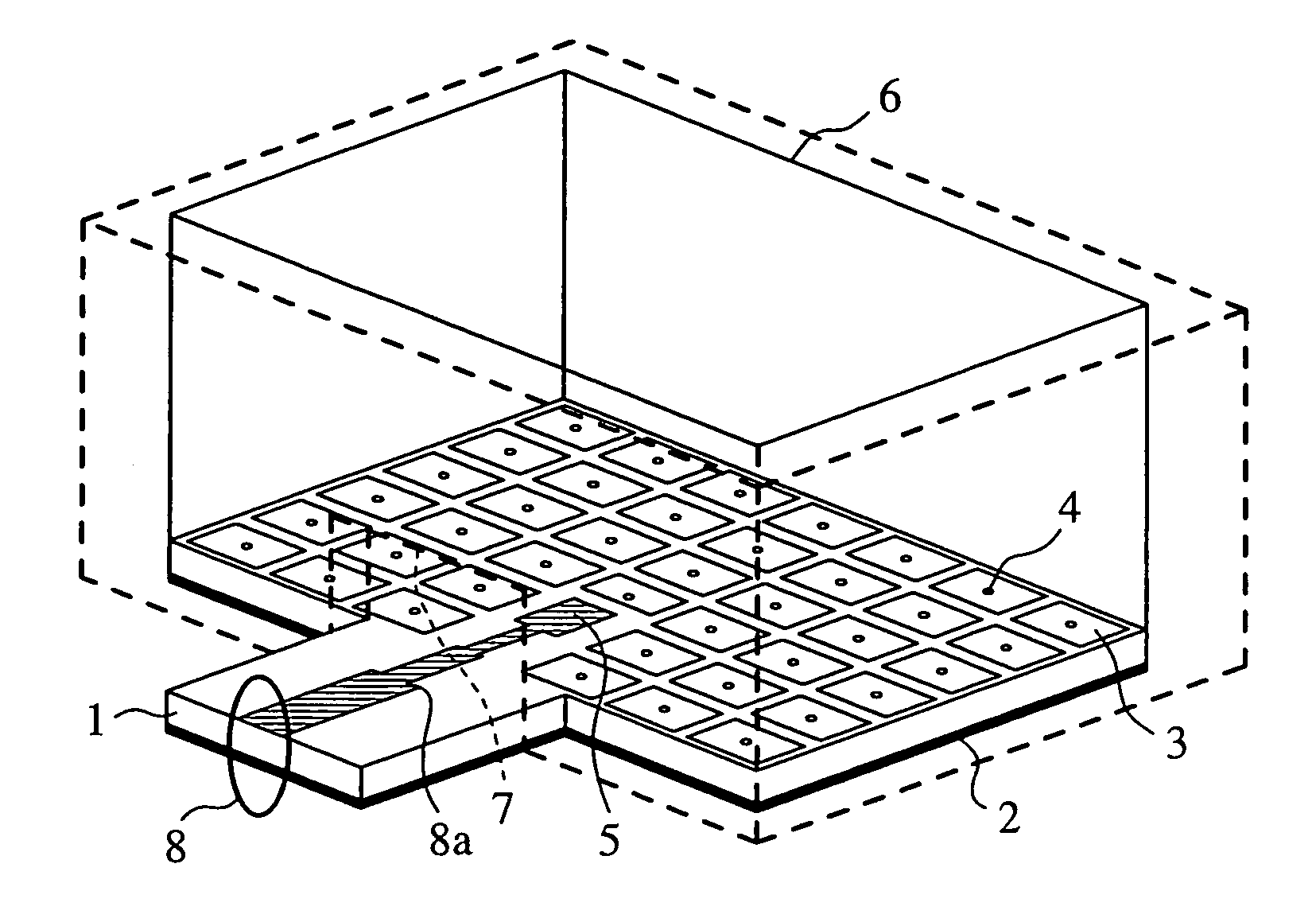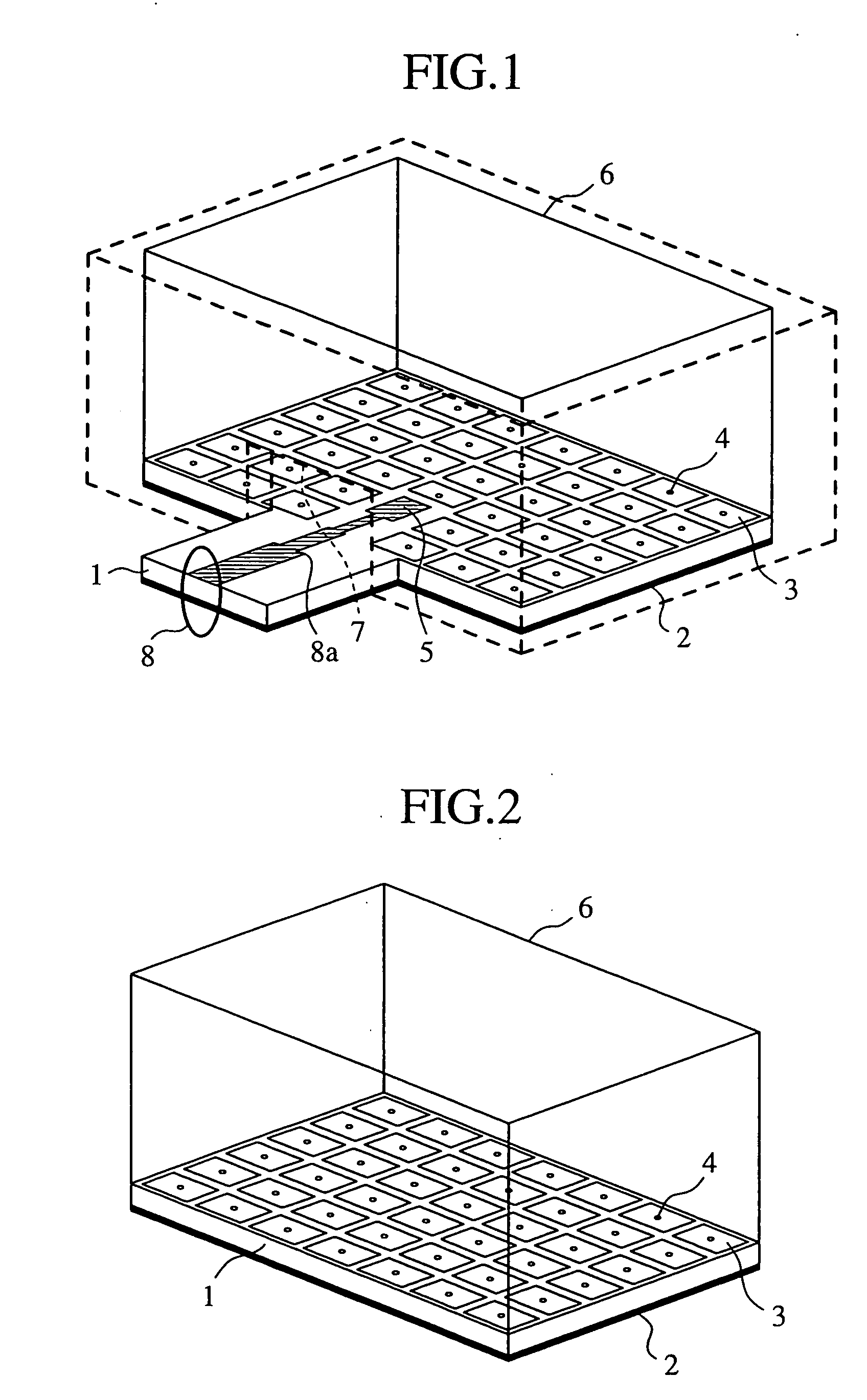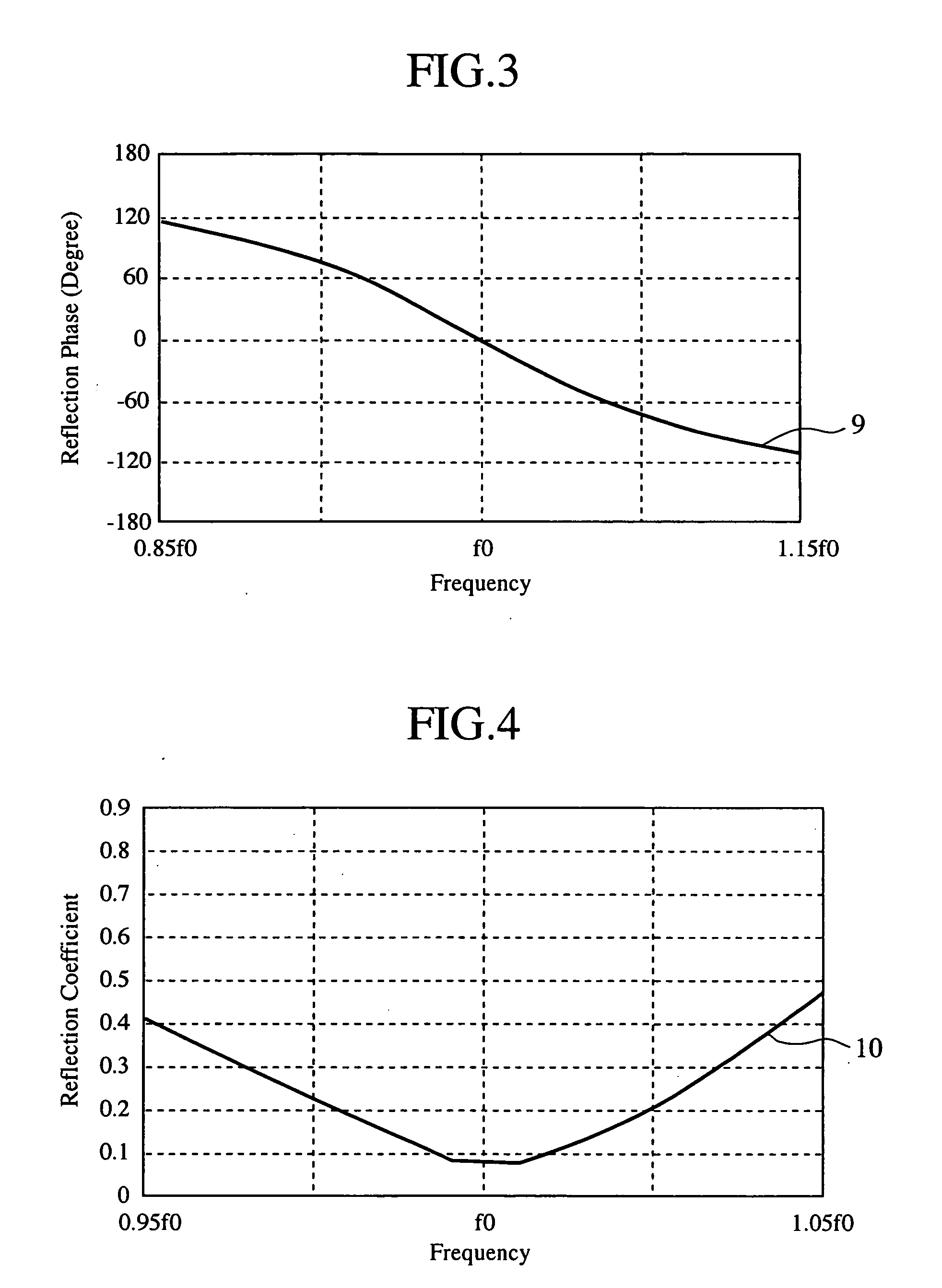Transition circuit
a technology of transition circuit and circuit body, applied in waveguides, electrical equipment, antennas, etc., can solve the problems of increasing the thickness of the circuit structure, deteriorating the performance of the transition circuit itself, and the wiring cannot be carried out at all in the portion, so as to reduce the thickness
- Summary
- Abstract
- Description
- Claims
- Application Information
AI Technical Summary
Benefits of technology
Problems solved by technology
Method used
Image
Examples
embodiment 1
[0030]FIG. 1 is a view showing the construction of a transition circuit in accordance with Embodiment 1 of the present invention. Referring to the figure, a dielectric substrate 1 includes two conductor layers. A ground conductor 2 is the first conductor layer of the dielectric substrate 1. In the second conductor layer of the dielectric substrate 1, are regularly disposed a plurality of polygonal conductor patterns 3. In this embodiment, the conductor pattern is a square one.
[0031] The ground conductor 2, which is the first conductor layer of the dielectric substrate 1 and each of the polygonal conductor patterns 3, which are formed in the second conductor layer thereof, are electrically connected through a through hole (electrical connection portion) 4. An open stub 5 is formed flush with the conductor layer, in which the plurality of polygonal conductor patterns 3 are disposed, on the dielectric substrate 1, and the stub has a rectangular shape the width of which is changed in t...
embodiment 2
[0053] In Embodiment 1, the example in which the transition circuit is constructed by use of two conductor layers formed on the dielectric substrate 1 is shown. In Embodiment 2, the dielectric substrate having three or more conductor layers is used to construct the transition circuit with two conductor layers arbitrarily selected therefrom. This construction can increase flexibility in the arrangement of layers in the dielectric substrate.
[0054]FIG. 5 is a view showing the construction of a transition circuit in accordance with Embodiment 2 of the present invention. In accordance with Embodiment 2, a multilayer substrate having three conductor layers therein is used for the dielectric substrate 1. The ground conductor 2 is formed in the first conductor layer, and the open stub 5 and the conductor patterns 3 are formed in the third conductor layer, which is the top layer.
[0055] In the second conductor layer disposed between the first conductor layer and the third conductor layer in...
embodiment 3
[0067] In Embodiment 2, the example is shown in which the microwave transmission line 8 consists of the conductor 8a formed on the top face of the extending portion of the dielectric substrate 1, the ground conductor 2 formed in the first conductor layer on the dielectric substrate 1, and the second ground conductor 11.
[0068] In Embodiment 3, a new dielectric substrate is placed over the conductor 8a and the open stub 5 formed on the dielectric substrate 1. Further, on the top face of the dielectric substrate, which is newly laminated thereto, a new second ground conductor 13 is provided at the position where the second ground conductor is symmetrical to the ground conductor 2 formed on the dielectric substrate 1 with the conductor 8a formed on the dielectric substrate 1 as a reference plane. This ground conductor 13 and the ground conductor 2 are electrically connected by a plurality of through holes 11 to construct the microwave transmission line 8.
[0069]FIG. 6 is a view showing...
PUM
 Login to View More
Login to View More Abstract
Description
Claims
Application Information
 Login to View More
Login to View More - R&D
- Intellectual Property
- Life Sciences
- Materials
- Tech Scout
- Unparalleled Data Quality
- Higher Quality Content
- 60% Fewer Hallucinations
Browse by: Latest US Patents, China's latest patents, Technical Efficacy Thesaurus, Application Domain, Technology Topic, Popular Technical Reports.
© 2025 PatSnap. All rights reserved.Legal|Privacy policy|Modern Slavery Act Transparency Statement|Sitemap|About US| Contact US: help@patsnap.com



